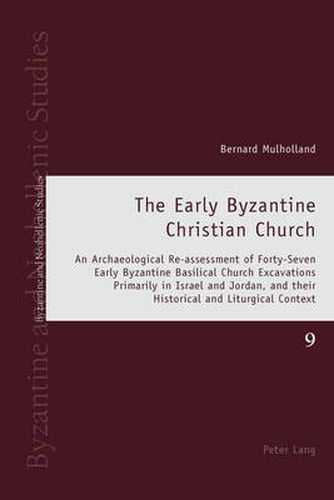Readings Newsletter
Become a Readings Member to make your shopping experience even easier.
Sign in or sign up for free!
You’re not far away from qualifying for FREE standard shipping within Australia
You’ve qualified for FREE standard shipping within Australia
The cart is loading…






This title is printed to order. This book may have been self-published. If so, we cannot guarantee the quality of the content. In the main most books will have gone through the editing process however some may not. We therefore suggest that you be aware of this before ordering this book. If in doubt check either the author or publisher’s details as we are unable to accept any returns unless they are faulty. Please contact us if you have any questions.
The observation that domestic artefacts are often recovered during church excavations led to an archaeological re-assessment of forty-seven Early Byzantine basilical church excavations and their historical, gender and liturgical context. The excavations were restricted to the three most common basilical church plans to allow for like-for-like analysis between sites that share the same plan: monoapsidal, inscribed and triapsidal. These sites were later found to have two distinct sanctuary configurations, namely a -shaped sanctuary in front of the apse, or else a sanctuary that extended across both side aisles that often formed a characteristic T-shaped layout. Further analysis indicated that -shaped sanctuaries are found in two church plans: firstly a protruding monoapsidal plan that characteristically has a major entrance located to either side of the apse, which is also referred to as a ‘Constantinopolitan’ church plan; and secondly in the inscribed plan, which is also referred to as a ‘Syrian’ church plan. The T-shaped layout is characteristic of the triapsidal plan, but can also occur in a monoapsidal plan, and this is referred to as a ‘Roman’ church plan. Detailed analysis of inscriptions and patterns of artefactual deposition also revealed the probable location of the diakonikon where the rite of prothesis took place.
$9.00 standard shipping within Australia
FREE standard shipping within Australia for orders over $100.00
Express & International shipping calculated at checkout
This title is printed to order. This book may have been self-published. If so, we cannot guarantee the quality of the content. In the main most books will have gone through the editing process however some may not. We therefore suggest that you be aware of this before ordering this book. If in doubt check either the author or publisher’s details as we are unable to accept any returns unless they are faulty. Please contact us if you have any questions.
The observation that domestic artefacts are often recovered during church excavations led to an archaeological re-assessment of forty-seven Early Byzantine basilical church excavations and their historical, gender and liturgical context. The excavations were restricted to the three most common basilical church plans to allow for like-for-like analysis between sites that share the same plan: monoapsidal, inscribed and triapsidal. These sites were later found to have two distinct sanctuary configurations, namely a -shaped sanctuary in front of the apse, or else a sanctuary that extended across both side aisles that often formed a characteristic T-shaped layout. Further analysis indicated that -shaped sanctuaries are found in two church plans: firstly a protruding monoapsidal plan that characteristically has a major entrance located to either side of the apse, which is also referred to as a ‘Constantinopolitan’ church plan; and secondly in the inscribed plan, which is also referred to as a ‘Syrian’ church plan. The T-shaped layout is characteristic of the triapsidal plan, but can also occur in a monoapsidal plan, and this is referred to as a ‘Roman’ church plan. Detailed analysis of inscriptions and patterns of artefactual deposition also revealed the probable location of the diakonikon where the rite of prothesis took place.